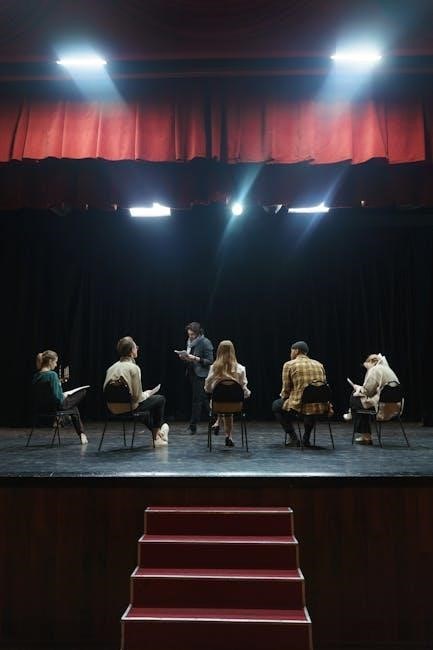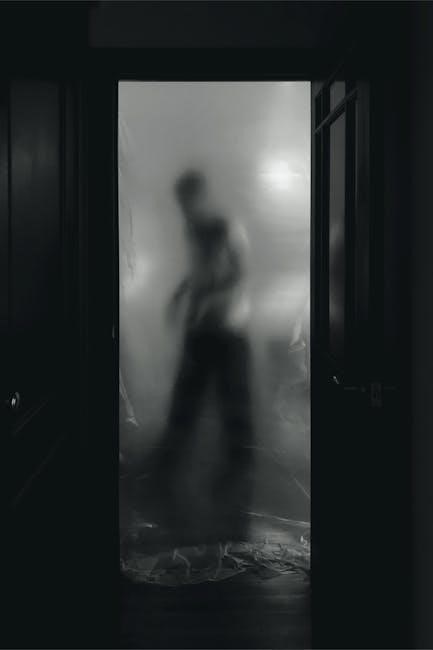Vincent Ward’s Alien 3 Script: An Overview
Vincent Ward’s Alien 3 script, co-written with John Fasano in 1990, stands as a prominent, yet unproduced, vision for the sequel. Set on Arceon, a wooden monastery satellite, it diverges significantly from the final film.

The Genesis of Ward’s Alien 3
Vincent Ward and John Fasano were recruited as writers for Alien 3 amidst numerous script attempts. Ward’s unique vision, partly inspired by his film The Navigator, led to the creation of the Arceon setting.
Ward and Fasano’s Collaboration and the Script’s Uniqueness
Vincent Ward’s collaboration with John Fasano resulted in a distinctive Alien 3 script that diverged significantly from conventional science fiction tropes. Their combined creativity manifested in the design of Arceon, a wooden monastery satellite, a stark contrast to the metallic environments typically associated with the Alien franchise. The script’s uniqueness stems from its fusion of sci-fi horror with themes of religious fanaticism and a rejection of technology.
Ward’s directorial background, particularly his work on The Navigator, likely influenced the script’s visual style and thematic depth. Fasano’s contributions helped shape the narrative and character development, creating a compelling story that explored the psychological impact of the Alien threat on a community isolated from the modern world. The script’s originality has contributed to its enduring popularity among fans.
The script stands out due to its imaginative setting and exploration of complex themes.
The Setting: Arceon, the Wooden Planet
Arceon, the setting for Ward’s Alien 3, is a unique, wooden monastery satellite. This location contrasts sharply with the typical metallic environments of the Alien universe, inhabited by reclusive monks.
Description of Arceon and its Inhabitants
Arceon is a man-made space station primarily constructed from wood around a metal frame, giving it a distinct aesthetic. Within its confines, fields of wheat thrive beneath a ceiling painted to mimic the sky, complete with windows allowing sunlight to filter through. This creates an artificial, yet serene, environment.
The inhabitants of Arceon are reclusive monks who have vehemently rejected all modern technology. This monastic order initially began as an anti-technology movement on Earth, growing significantly after a computer virus wiped out vast amounts of data. Exiled to Arceon for their beliefs, they maintain a primitive lifestyle, utilizing antiquated tools and adhering to strict religious doctrines. Their society is led by an Abbot, who holds significant authority and maintains a skeptical view of the outside world, particularly regarding technology and Ripley’s warnings.

Plot Synopsis of Ward’s Alien 3
Ripley’s escape pod crashes on Arceon, inhabited by anti-tech monks. She warns of the Alien, but the Abbot dismisses her claims, leading to a deadly confrontation within the wooden monastery.
The Arrival of Ripley and the Discovery of the Alien Threat
The story initiates with monks at Arceon, a wooden space station, observing what appears to be a shooting star crashing into a lake. This “star” is, in fact, the escape pod containing Ripley, ejected from the besieged Sulaco. Brother John rescues her, discovering a distress message detailing the Xenomorph infestation and the deaths of Hicks and Bishop.
Upon awakening, Ripley finds herself amidst the monks’ anti-technology society. She attempts to warn them about the Alien threat, but the Abbot, skeptical of her claims and convinced Earth was destroyed long ago, dismisses her warnings as deception. However, the emergence of a Chestburster from a sheep shatters the monks’ complacency, revealing the horrific truth Ripley tried to convey. This event marks the beginning of the Alien’s reign of terror within Arceon’s wooden walls, forcing Ripley to confront the nightmare once more.
Key Differences from the Final Alien 3 Film
Ward’s Alien 3 distinguishes itself through its unique setting, Arceon, and the survival of Newt upon arrival. The religious order and rejection of technology offer a stark contrast.
In Vincent Ward’s script, the Sulaco faces an Alien siege, setting a different course for the surviving crew. Unlike the final film, Newt survives the initial events, escaping in a pod with Ripley. This escape pod crashes onto Arceon, a wooden monastery satellite inhabited by monks who have rejected technology. This contrasts sharply with the grim prison setting of the theatrical release.
The monks’ existence on Arceon, their unique beliefs, and the planet’s construction all contribute to a vastly different narrative landscape. The script explores how Ripley’s arrival disrupts their isolated world and forces a confrontation with the Alien threat within their wooden sanctuary. The fate of Hicks and Bishop are not explicitly detailed in the overview, leaving their status ambiguous upon reaching Arceon.

Themes and Concepts in Ward’s Script
Ward’s Alien 3 delves into themes of technology rejection and religious fanaticism. The monks’ Luddite society clashes with Ripley’s technological background, highlighting humanity’s complex relationship with progress and faith.
Rejection of Technology and Religious Fanaticism
Vincent Ward’s Alien 3 script intensely explores the themes of technology rejection and religious fanaticism through the unique setting of Arceon. The monastic order residing on the wooden planet has consciously abandoned all modern technology, viewing it as a corrupting influence that led to Earth’s destruction. This Luddite philosophy is a central tenet of their faith and dictates their way of life.
The community’s fervent religious beliefs and strict adherence to tradition create a closed and skeptical environment. The Abbot’s unwavering faith in their dogma leads him to dismiss Ripley’s warnings about the Alien threat, attributing her story to deception and delusion. This clash between Ripley’s scientific understanding and the monks’ religious worldview drives the narrative’s conflict.
The script uses the Alien as a catalyst to expose the dangers of both unchecked technological advancement and dogmatic religious zealotry.

Legacy and Influence of Ward’s Alien 3
Despite remaining unproduced, Vincent Ward’s Alien 3 script has garnered a significant legacy, captivating audiences with its unique setting, religious themes, and distinct vision for the Alien universe, influencing subsequent sci-fi concepts.
Why Ward’s Version Remains Popular and Unproduced
Vincent Ward’s Alien 3 script maintains popularity due to its originality. The wooden planet Arceon and the monastic order offered a stark contrast to the franchise’s technological focus. This unique blend of sci-fi and religious themes resonated with fans seeking something beyond typical sequels. The script’s themes of rejecting technology also present a compelling narrative.
However, its unproduced status stems from its departure from established franchise elements. Studio hesitation likely arose from the perceived risk of alienating audiences accustomed to action-oriented sci-fi. The script’s unconventional narrative and setting might have been deemed too experimental. Budgetary concerns associated with realizing Arceon’s unique visual design could have also played a role. Ultimately, the script’s daring vision contributed to both its enduring appeal and its unrealized potential.
